The best varieties of cucumbers for growing in Siberia in a greenhouse and open field
Cold-tolerant varieties of cucumbers are chosen for cultivation in Siberia. They tolerate abrupt climate changes without consequences, bear fruit in frost and low temperatures, rarely get sick. Such cucumbers do not taste different from the southern ones, they are universal in use, suitable for fresh consumption and for preparing winter snacks and salads.
In the article, we will consider in detail the best varieties with photos and descriptions.
The content of the article
Features of seeds for Siberia
For growing, choose early or mid-season varieties and hybrids - they ripen quickly and do not have time to get sick. Cucumbers are resistant to prolonged rains and fogs, cold snap. They are distinguished by immunity to diseases, resistance to pests, ripen together.
Seeds to grow large and heavy... Before planting, they must be disinfected with a solution of boric acid or potassium permanganate. To obtain the best yield, the material is germinated - placed in a damp gauze and removed in a warm place for several days. To accelerate development, the growth stimulator "Kornevin" is added.
Siberian varieties and hybrids for greenhouses and open ground
Before buying cucumber seeds, it is recommended to study the information on the package: the manufacturer indicates the expiration date of the seed, recommendations for care, favorable growing region.
Alligator cucumbers
Such name got pimply cucumbers, which ripen quickly and are great for making healthy vegetable salads. They are distinguished by high productivity, therefore, it is not recommended to plant more than two bushes.
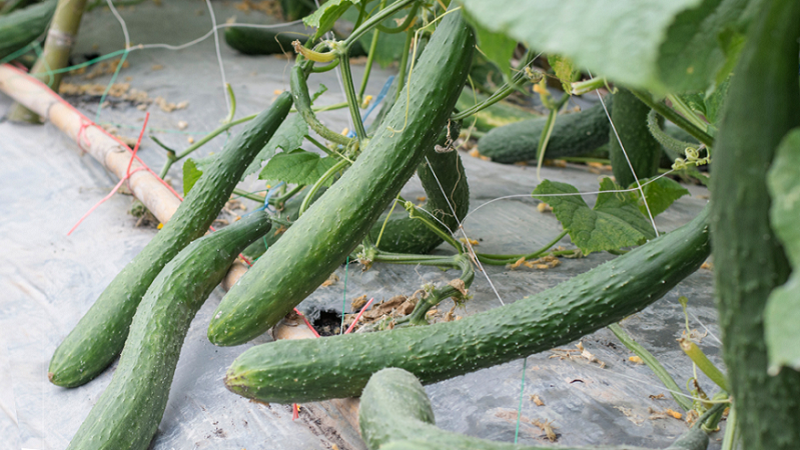
Gardeners secrete cucumbers Chinese disease-resistant, Ekaterina, Chinese farm, Chinese heat resistant. The vegetables are long, rich green, crispy and aromatic. They are called "alligators" due to the fact that outwardly pimply green vegetables are somewhat similar to crocodiles. In Siberia, alligator cucumbers are planted in greenhouses or hotbeds.
Interesting. This type of cucumber came to Russia from China and Korea. Residents of eastern countries use such vegetables for cooking national dishes - soba with fried cucumbers, green salad with shiso sauce, tacos with Peking duck.
Gherkins
Gherkins used to prepare juicy and crunchy blanks for the winter... The length of one cucumber is 5-8 cm, the surface is with pimples. Gherkins are planted in open ground and in a greenhouse, Siberian varieties and hybrids are cold-resistant and show stable yields. Up to 50 fruits are removed from one plant.
Gardeners distinguish varieties:
 Garland;
Garland;- Red mullet;
- Lilliputian;
- Parisian gherkin;
- Funny company;
- Prima donna (see photo)
Fruit cucumbers
Vegetables with a smooth skin and a pleasant taste... Gardeners prepare light salads and snacks from them - sandwiches, canapes, rolls, vegetable smoothies. In length, the fruits reach 15 cm, the peel is dark green, the pulp is juicy.
For cultivation in Siberia, the varieties Sasha, Aprelsky, Fruktovy are chosen. They have an average ripening period, the plants bear fruit at the same time. The crop is not suitable for long-term storage and transportation.
Glowworm
Powerful plants with long lashes are planted in the greenhouse... The ripening period of cucumbers is 40-45 days from the moment the first shoots appear.Fruits are dark green with light stripes, cylindrical in shape, length about 15 cm. Fruit weight up to 120 g, dense peel, with tubercles. Differs in resistance to viruses, stored for a long time. It is versatile in use, suitable for preparations and salads.
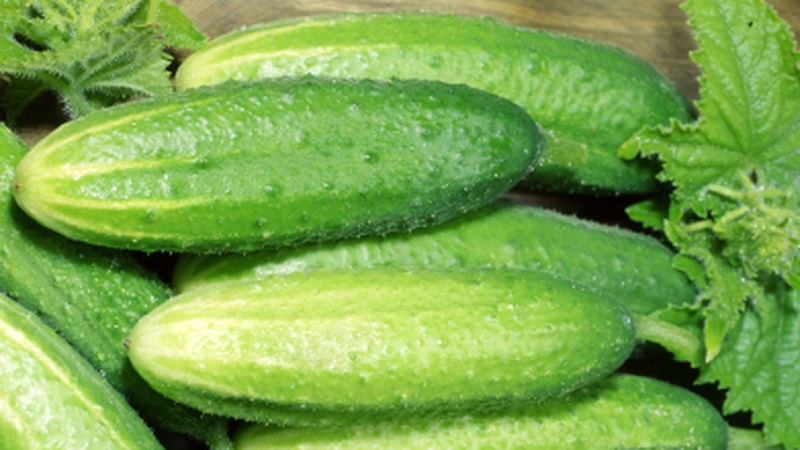
Chestplate f1
The hybrid is suitable for growing in small private plots and in farm fields. The plant is powerful and tall, the fruits are cylindrical, have a pronounced taste and cucumber aroma. Length about 15 cm, diameter 5 cm. The hybrid has an attractive presentation and transportability, suitable for sale. It is unpretentious in care, stable yield of 10 kg per 1 m².
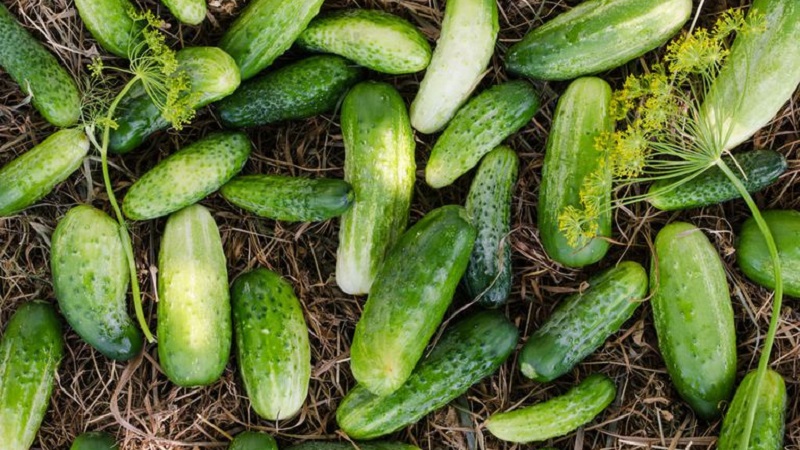
Gusto
An early ripening variety ripens 38-43 days after planting... Gardeners recommend planting seedlings, having previously disinfected the seeds and soil. The relish is resistant to tobacco mosaic and bacteriosis. Fruits are lumpy, weight up to 100 g, length about 18 cm. They are universal in use, yield 4 kg per 1 m². Suitable for growing outdoors and in greenhouses.
Champion Sedek f1
The hybrid ripens in 50-55 days, yield up to 30 kg from 1 m²... Fruits are large, pimply, crispy pulp. Weight is about 150 g, length is 13 cm. The peel is dense, so the fruits are stored for a long time. The hybrid is resistant to cladosporia and viruses, is rarely attacked by insect pests, and does not require special knowledge and agronomic skills in care. In application, the crop is universal.
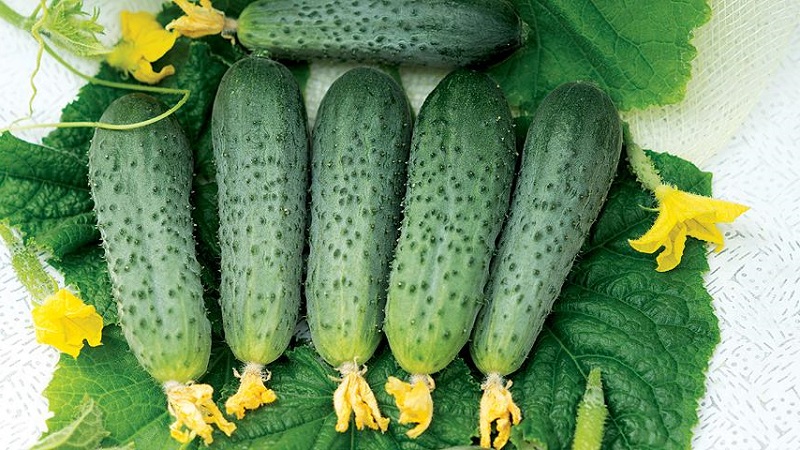
Serpentine
Medium-sized bee-pollinated Serpentine bears fruit 35-40 days from the day the first shoots appear... Cucumbers are small, oval-cylindrical. The peel is covered with large tubercles with thorns, the color is dark green, light in places.
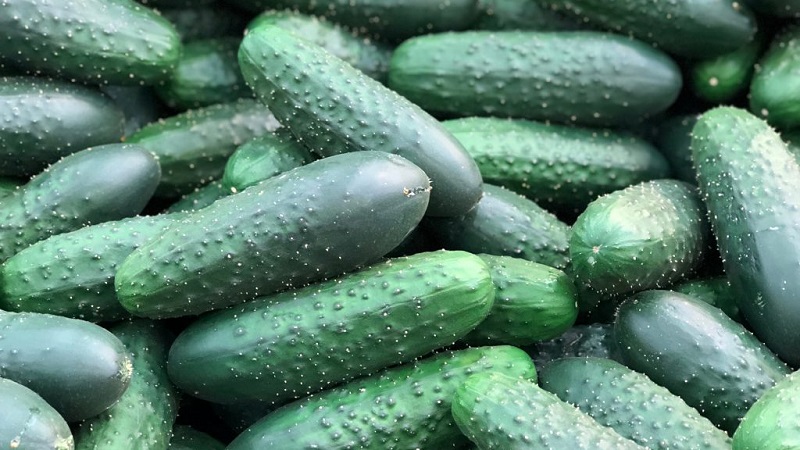
Length up to 10 cm, weight of one about 80-90 g, in some cases 120 g... The taste is pleasant, slightly sweet. The crop is characterized by keeping quality and transportability, suitable for growing on an industrial scale. Gardeners harvest up to 5 kg of crops from 1 m².
Apogee f1
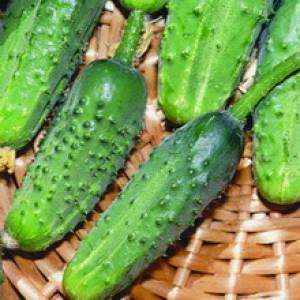 The hybrid is grown in the West Siberian region in greenhouses and in the open field... Tall plant with long whips.
The hybrid is grown in the West Siberian region in greenhouses and in the open field... Tall plant with long whips.
Fruits are small, one weighs about 100 g, length 10 cm... Vegetables are suitable for whole canning, they look appetizing in a jar. The taste is gentle, without bitterness, the pulp is light green.
Apogee is resistant to pests, has immunity to fungal and viral diseases... About 4 kg of the crop is harvested from 1 m².
Altai
Plants are compact, suitable for growing in a small area. Ripening period 40-45 days, cucumbers are tied together... The shape is oval, with bends and irregularities. Fruit weight 80 g, length 10 cm. Peel with small thorns, thin.
The pulp is crispy and tasty, the fruit is universal in use. Altai is resistant to fog, frost and prolonged rain.
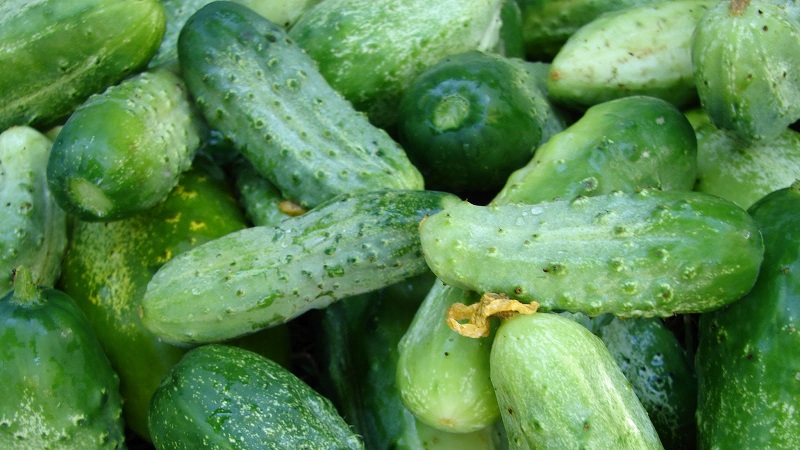
Altai early 166
Small lumpy cucumber has a sweetish fresh taste and pleasant flesh... Weight about 90 g, length 8 cm, diameter 4 cm. The color of the vegetable is light green, there are small white stripes. It takes 48-55 days from the moment of planting seeds to harvesting.
Gardeners recommend growing Altai Early 166 in the open field. The crop is suitable for fresh consumption, vegetables contain vitamins A and E.
Cascade
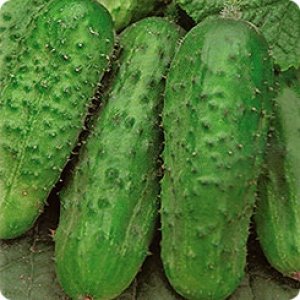 The crop ripens in 40-50 days, it is recommended to plant seeds in open ground... The plant is semi-sprawling, the roots are powerful.
The crop ripens in 40-50 days, it is recommended to plant seeds in open ground... The plant is semi-sprawling, the roots are powerful.
Cucumbers are long, cylindrical-oval in shape. Length 16 cm, weight about 130 g, diameter 3-4 cm... The tubercles are large, the peel is emerald green.
Classic taste, neither bitter nor sour... Cascade is appreciated for its stable yield - about 3 kg of beautiful and appetizing fruits are harvested from 1 m². Use vegetables for preparations and salads.
Claudia f1
Hybrid Claudia forms an ovary without pollination, therefore it is suitable for growing in greenhouse and greenhouse conditions... Shoots of medium length, powerful stem. The fruits ripen together, have resistance to tobacco mosaic virus and powdery mildew.
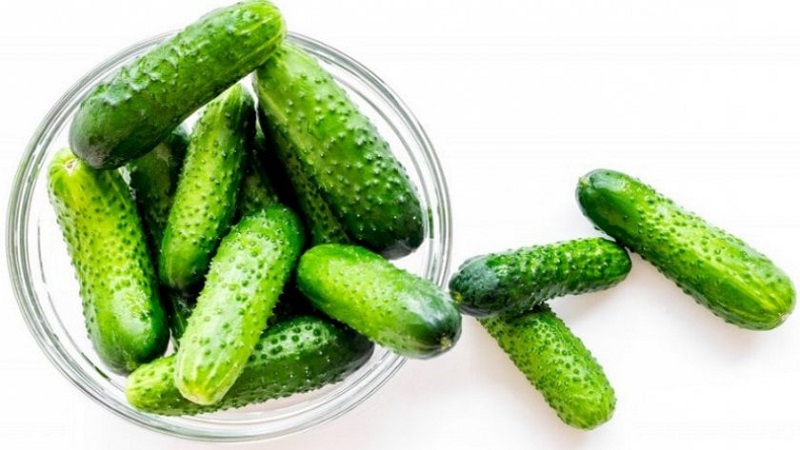
Cucumber weight about 100 g, length up to 15 cm... The surface is slightly lumpy, with a small light fluff. The aroma is intense, the flesh is sweet and tender. With proper care, gardeners from 1 m² per season collect about 25 beautiful and juicy cucumbers.
Important! Hybrids are frost-hardy and unpretentious in care, better than many varieties are suitable for growing in an unpredictable and cold Siberian climate. They are obtained by crossing several varieties, combining the strengths of each.
Herman f1
Gardeners harvest on 43-47 days from the moment the first shoots appear... Seeds are planted in a seedling or non-seedling way. The cucumber grows on acidic and hard soils, it is unpretentious in care. Hermann bears fruit during rain and frost, rarely gets sick.
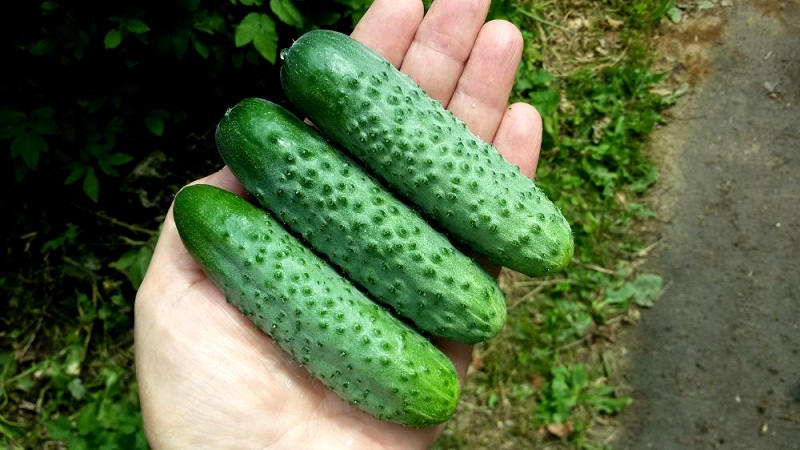
Cucumber weight 90 g, length 80 cm, diameter about 3 cm... Classic green color, light flesh. The taste is pleasant, there is no bitterness. Up to 15 kg of vegetables are removed from 1 m². In winter, the hybrid is grown in heated greenhouses, the cucumbers are healthy and tasty, suitable for sale.
Zozulya f1
Popular and loved by everyone Zozulya cucumber famous for its juicy taste and sweet pulp. The first fruits are harvested 40-45 days after planting. Length up to 25 cm, weight up to 300 g. The peel is dark green, with thorns, dense.
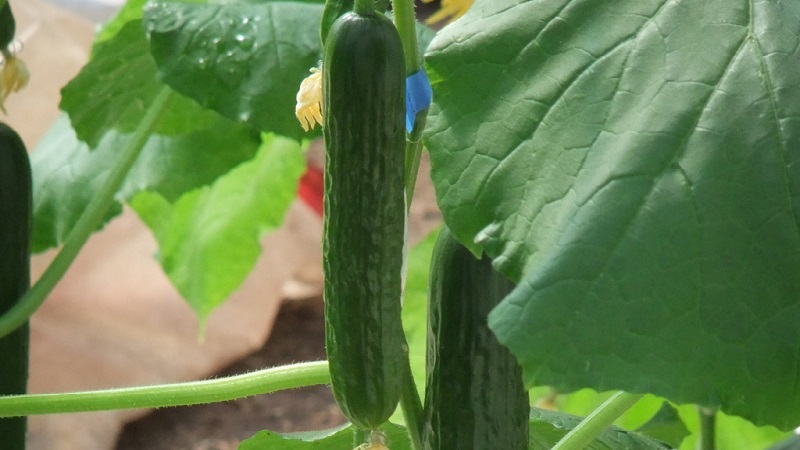
The pulp is fragrant, the seeds are small. Vegetables retain their attractive appearance for a long time, do not turn yellow or outgrow... For the season, gardeners collect up to 20 kg from 1 m². They are used fresh and for preparing salads, snacks and sandwiches.
Courage f1
Self-pollinated hybrid Courage suitable for growing in greenhouses and greenhouses. Plants of medium size, vigorous and spreading lashes. The weight of the cucumber is about 120 g, the length is 10 cm. The purpose is salad, but the vegetable is also suitable for canning. About 12 kg of the crop is harvested from 1 m².
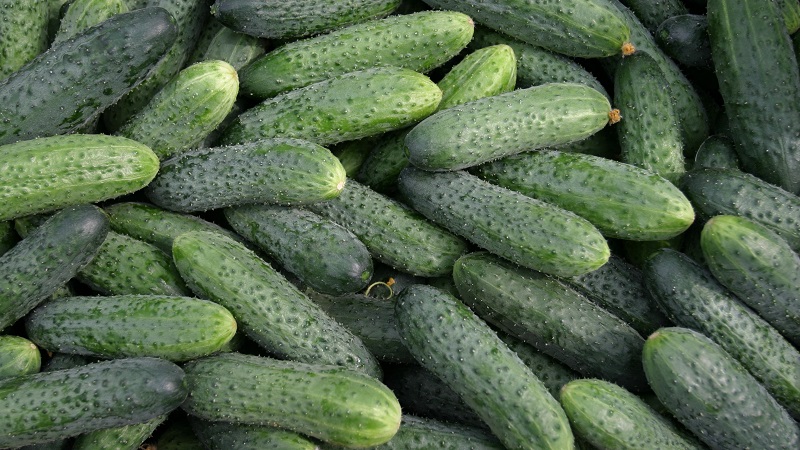
What varieties and hybrids are considered the best for Siberia
Cucumbers are chosen for early collection and preparation of vegetable salads. Cascade, Altai, Graceful. They have a juicy, sweet taste. For conservation and pickling, Herman, Apogee, Serpentine are suitable. Vegetables retain their firm and crispy flesh during the cooking process.
For long-term storage and transportation over long distances, they are grown Zozul, Champion Sedek and Brigantine. All of the above cucumbers have early ripening periods, are unpretentious in care and are immune to major diseases.
The most productive
Over the summer, gardeners collect up to 30 kg of Champion Sedek cucumber crop. Hybrid German gives about 15 kg from 1 m², Zozulya - about 20 kg... These are record holders for the number of crops, suitable for growing on an industrial scale and for sale.
Attention! Varieties and hybrids are also distinguished by a high yield, Bouquet, for everyone's joy, bundle charm, Green Stream, Emerald City, Green Garland.
Cucumber care in Siberia
To get a rich and tasty harvest, gardeners follow a number of agrotechnical rules.... They provide healthy plant growth, fruit formation and protection from disease.
Recommendations:
- Water the beds with warm water as the soil dries. About 2 liters of water are consumed per plant. If the summer is rainy, then the amount of water is reduced. Watering in the morning or evening, directing a stream of water to the base of the stem, this helps to avoid sunburn. To protect the plant from disease, a nettle-based infusion is used once a week instead of water.
- Before each watering, the soil is loosened and weeds are removed, this provides oxygen access to the roots and protects against pests. Loosening makes the soil lighter and more nutritious, maintains a healthy microflora of the beds.
- Fertilize cucumbers with mineral and organic fertilizers - ash, liquid manure, ammonium nitrate, urea, vermicompost, nitrogen-containing dressings. Nutrient mixtures are added every 15 days before watering.
- Foliar dressing is used - spraying with a solution of Bordeaux liquid or copper sulfate. They strengthen the immune system and protect against disease.
- After planting in the soil, the sprouts are covered with a polyethylene cap for 5 days: it protects young and fragile seedlings from frost, winds and rain.
What do experienced gardeners say about growing cucumbers in Siberia
Experienced gardeners and farmers share the secrets of growing Siberian cucumbers, give advice and recommendations.
Alexander, Novosibirsk: “I have been growing the Cascade cucumber for the third year, I get an excellent harvest, up to 5 kg per 1 m². Zelentsy are beautiful and tasty, do not taste bitter, the skin is thin. I advise you to grow seedlings and plant in a greenhouse with nutritious soil. Cucumbers are good fresh and processed. "
Elena, Tyumen region: “I advise you to grow an Altai cucumber. This is the best cucumber variety for Siberia in a greenhouse. It does not require much effort - just watering and fertilizing the beds. The harvest is stable, the taste is good. But I didn't like the Serpentine cucumber - half of the harvest was bitter. "
Olga, Angarsk: “I grow cucumbers for Zozulya and Herman. I love hybrids for their immunity and unpretentiousness. I make salads and preparations for the winter. "
Conclusion
To choose a suitable variety of cucumbers for growing in Siberia, it is recommended that you familiarize yourself with care tips and yield indicators. Cucumbers should have a strong immunity to disease, be frost-resistant.
Special attention is paid to hybrids - they require less effort in care and show consistently high yields.